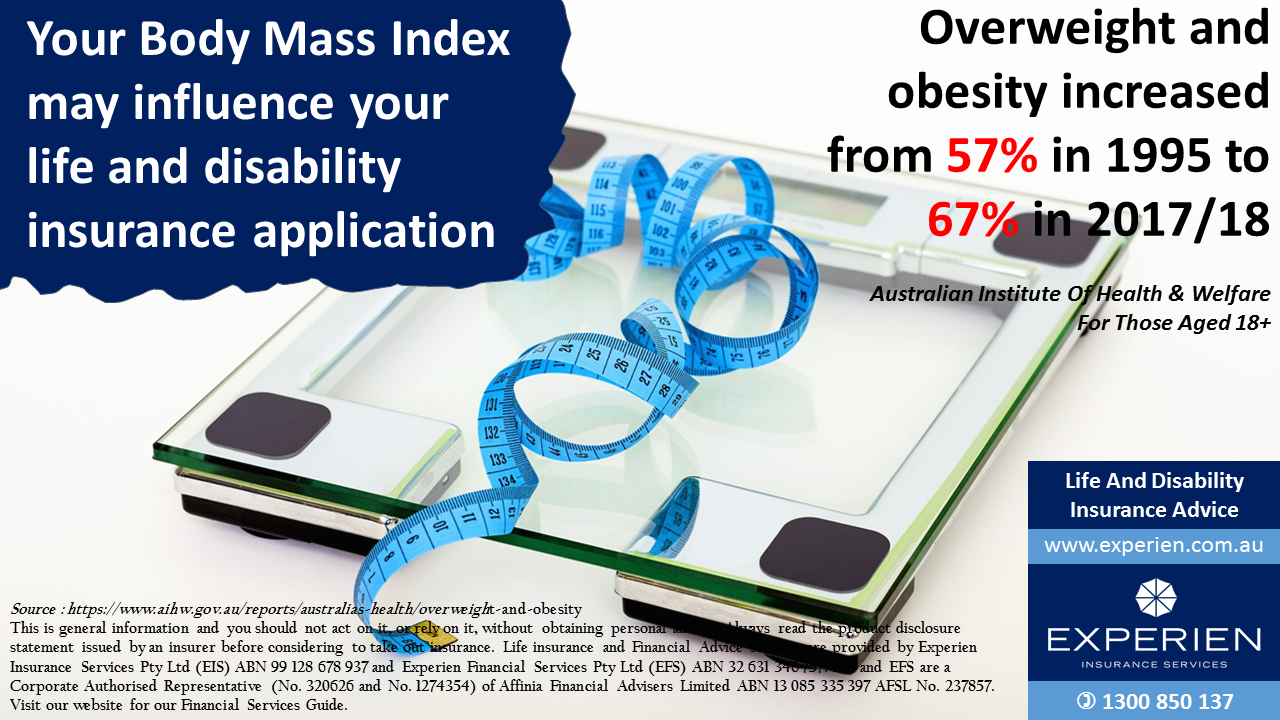Does your height and weight (BMI) impact a life insurance application ?
Medical research indicates that being overweight is associated with an increased risk of a number of diseases and conditions such as heart attack, stroke, diabetes and musculoskeletal disorders
In July 2020, the AIHW reported that, after adjusting for different population age structures over time, the prevalence of overweight and obesity among Australians aged 18 and over increased from 57% in 1995 to 67% in 2017–18.
Life insurers often uses the BMI (Body Mass Index) metric to assess the medical implications of an applicant’s weight compared to their height.
They use the following formula to calculate BMI : BMI = Weight/(Height x Height)
E.g. Weight 90kg and Height 180cm BMI = 90/(1.8 x 1.8) = 28 BMI
Using one life insurer, as an example in Jan 22, for applicants aged over 18, a BMI between 18.5 and 25 is considered to be a healthy range. A BMI over 35 is considered to be obese and a premium loading may be applied. For a BMI of 36 and greater some further medical investigations may be required taking into consideration each client’s individual circumstances and family history.
Another insurer notes that, where co-morbid features (for example, hypertension, hyperlipidaemia, diabetes or where there is a family history of any of these conditions or cardio-vascular disease) the threshold for medical screening may need to be reduced.
Each insurer will differ in how they respond to various levels of BMI readings for each applicant and what factors they take into account.

This is general information that is not specific to any one person. Life insurance and Financial Advice services are provided by Experien Insurance Services Pty Ltd (EIS) ABN 99 128 678 937 and Experien Financial Services Pty Ltd (EFS) ABN 32 631 346 757. EIS and EFS are a Corporate Authorised Representative (No. 320626 and No. 1274354) of Affinia Financial Advisers Limited ABN 13 085 335 397 AFSL No. 237857. See our website for our Financial Services Guide. Always read the Product Disclosure Statement issued by an Insurer before considering insurance.




